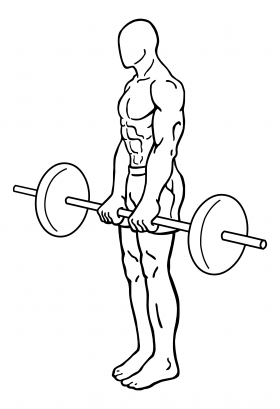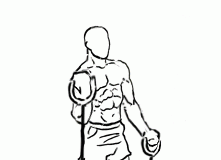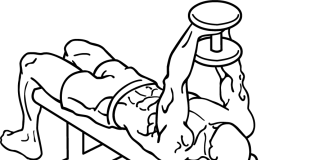Last Updated on September 30, 2022
Deadlifts are a cornerstone of strength training, offering numerous benefits for both athletes and fitness enthusiasts. This blog will delve into the intricacies of barbell deadlifts, providing updated insights and techniques to help you perfect this powerful exercise. Whether you’re a beginner or an experienced lifter, understanding the nuances of deadlifting can significantly enhance your workout routine and overall fitness.
Understanding the Barbell Deadlift
The barbell deadlift is a compound exercise that targets multiple muscle groups, primarily focusing on the posterior chain, which includes the glutes, hamstrings, and lower back. This exercise involves lifting a barbell from the ground to hip level and then lowering it back down, all while maintaining proper form and technique.
Key Muscle Groups Worked
- Glutes and Hamstrings: These muscles are the primary movers during the deadlift, helping to extend the hips and stabilize the body.
- Quadriceps: Assist in the initial lift-off from the ground.
- Core Muscles: Engage to stabilize the spine and maintain a neutral position.
- Upper Back and Trapezius: Help in stabilizing the shoulders and maintaining posture throughout the lift.
Benefits of Deadlifting
Deadlifts offer a plethora of benefits, making them a staple in many strength-training programs:
- Improved Strength and Power: Deadlifts enhance overall strength, particularly in the lower body, and improve power production, which is beneficial for athletic performance.
- Functional Fitness: This exercise mimics real-life movements, such as lifting heavy objects, thereby improving functional strength.
- Increased Muscle Mass: Deadlifts engage multiple muscle groups, promoting muscle growth and hypertrophy.
- Enhanced Core Stability: The need to maintain a neutral spine and engage the core throughout the lift improves core strength and stability.
- Versatility: With various deadlift variations available, this exercise can be tailored to target specific muscle groups or address particular fitness goals.
Proper Deadlift Technique
Executing a deadlift with proper form is crucial to maximizing its benefits and minimizing the risk of injury. Here’s a step-by-step guide:
- Setup: Stand with your feet shoulder-width apart, with the barbell over the middle of your feet. Your shins should be close to the bar.
- Grip: Bend at the hips and knees to grasp the bar with an overhand grip, hands slightly wider than shoulder-width apart.
- Body Position: Keep your back straight, shoulders above your hips, and hips above your knees. Engage your core and maintain a neutral spine.
- Lift: Push through your heels, extend your hips and knees simultaneously, and lift the bar while keeping it close to your body. Avoid jerking the bar; instead, use a controlled motion.
- Lockout: At the top of the lift, stand tall with your hips fully extended, but avoid leaning back excessively.
- Lowering: Reverse the motion by pushing your hips back and bending your knees, keeping the bar close to your body as you lower it to the ground.
Tips for Safe and Effective Deadlifting
- Warm-Up: Always start with a thorough warm-up, including dynamic stretches and light cardio, to prepare your muscles and joints for the lift.
- Start Light: If you’re new to deadlifting, begin with lighter weights to focus on mastering the form before progressing to heavier loads.
- Use Proper Footwear: Flat-soled shoes or barefoot lifting shoes provide stability and a solid base for deadlifting.
- Listen to Your Body: Pay attention to any signs of discomfort or pain, and adjust your technique or weight as needed to prevent injury.
- Consult a Professional: If you’re unsure about your form or technique, consider working with a fitness trainer to receive personalized guidance and feedback.
Deadlift Variations
Incorporating different deadlift variations can add diversity to your workout routine and target specific muscle groups:
- Sumo Deadlift: Involves a wider stance and targets the inner thighs more intensely.
- Romanian Deadlift: Focuses on the hamstrings and glutes, with less emphasis on the lower back.
- Trap Bar Deadlift: Uses a hexagonal bar, allowing for a more upright torso position, which can be easier on the lower back.
Barbell deadlifts are a powerful addition to any strength-training program, offering a multitude of benefits from increased muscle mass to improved functional fitness. By mastering proper technique and incorporating variations, you can safely and effectively enhance your strength and conditioning. Whether you’re lifting for sport or personal fitness, the deadlift is a valuable exercise that can elevate your physical capabilities and confidence.


Exercise images by Everkinetic.






